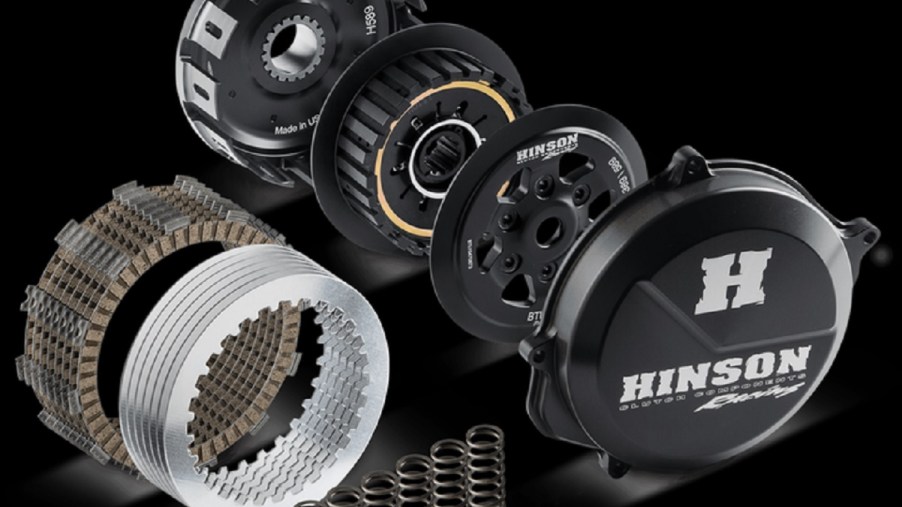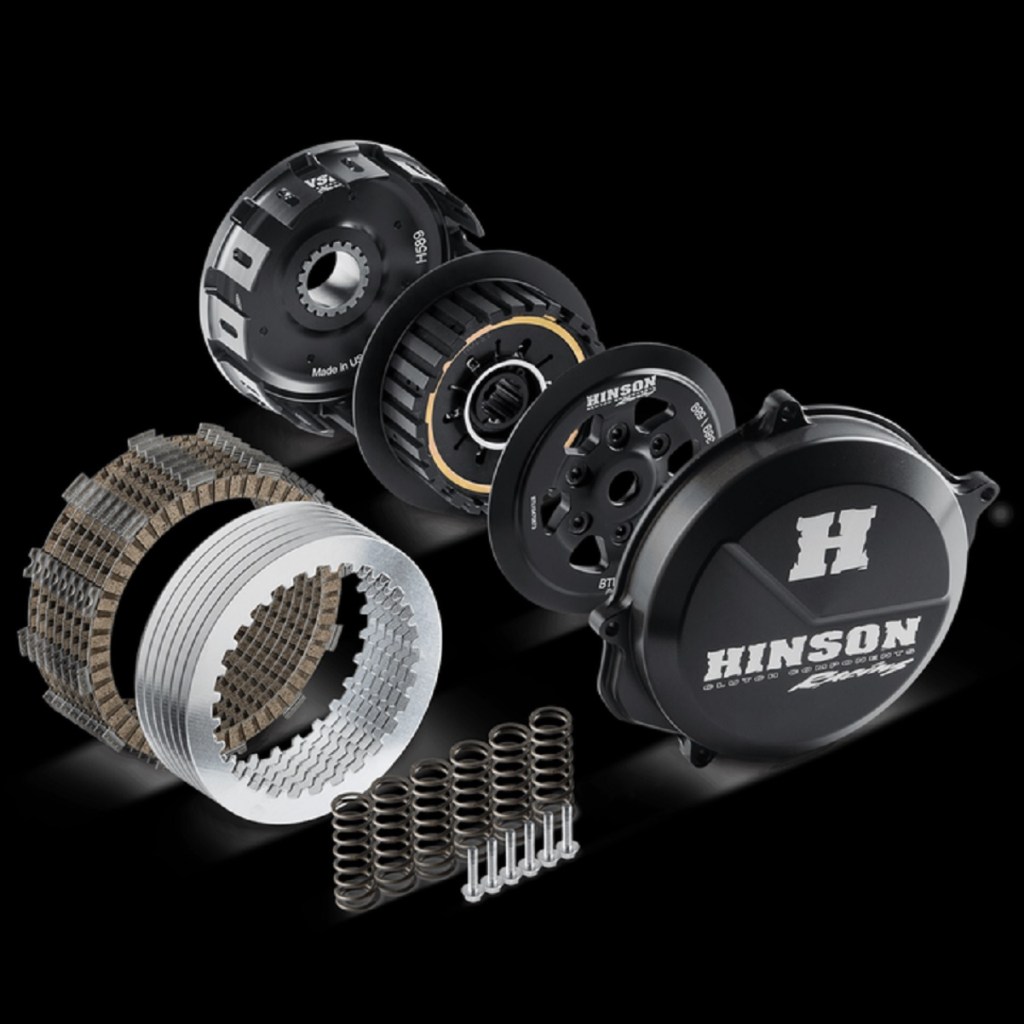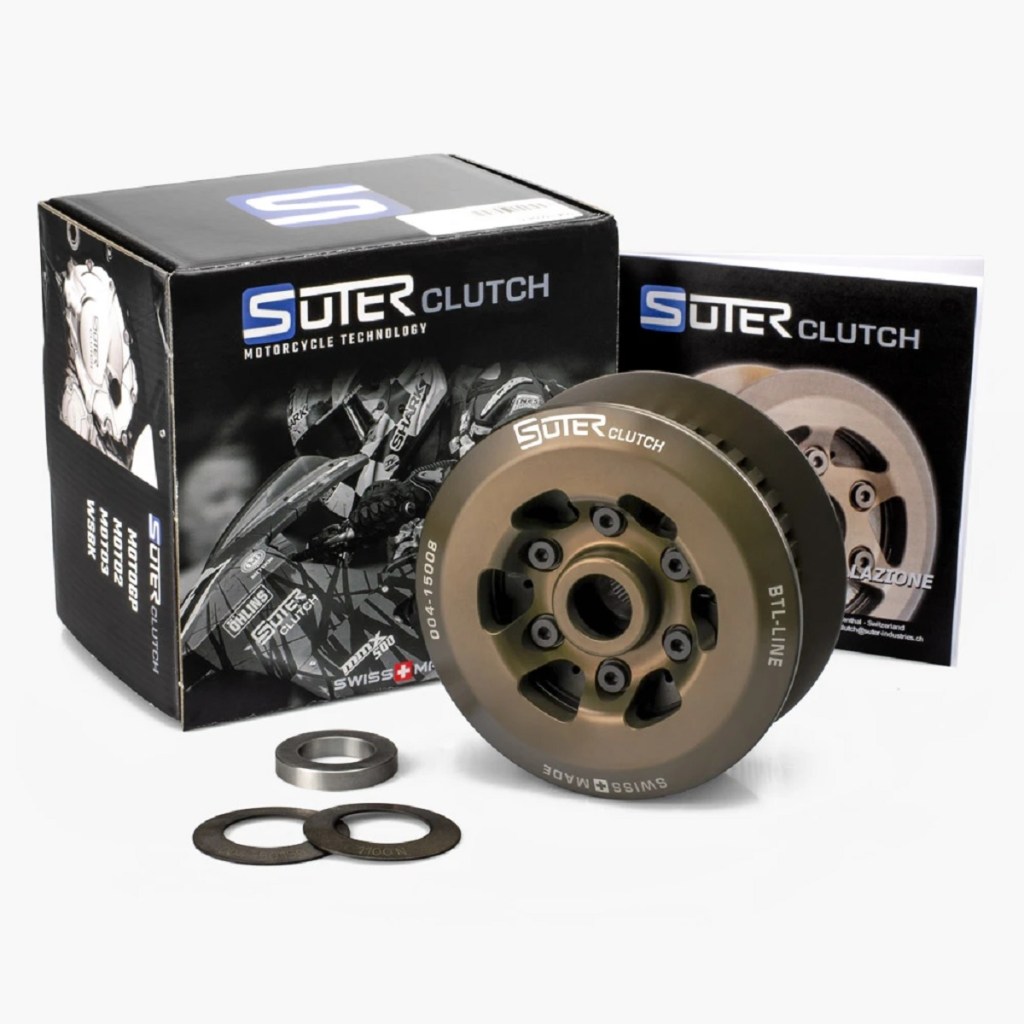
Is Getting a Motorcycle Slipper Clutch Worth It?
No bike modification will ever replace learning proper riding techniques. But that doesn’t mean tweaking your motorcycle is necessarily pointless. While some mods are more about style than substance, others can genuinely improve how your bike rides. And a common modification, especially for track aficionados, is a slipper clutch. But if your motorcycle doesn’t already have one, is it worth installing?
What’s the difference between a slipper clutch and a ‘normal’ motorcycle clutch?

On the outside, a slipper clutch and a ‘conventional’ motorcycle clutch are essentially identical. The same goes for their internal components, too. Both clutches feature multiple alternating friction and steel plates, springs, an outer basket, an inner hub, and a pressure plate, Motorcyclist explains. And just like ‘normal’ clutches, a slipper clutch can be wet or dry.
Also, whether it’s actuated by a cable or hydraulic pressure, a slipper clutch does the same basic job as a ‘normal’ motorcycle clutch. That job is to help control the flow of power from the engine flywheel (via the inner basket) to the transmission’s input shaft. So, regardless of which type of clutch your bike has, pulling the lever disengages the engine and transmission and lets you shift gear.
However, a slipper clutch has several additional parts on top of those it shares with a conventional clutch. Specifically, it has ramps sandwiched between the inner basket and pressure plate, Motorcyclist explains. Some models’ ramps also feature sliding balls, Cycle World notes.
But regardless of sphere status, these ramps are the reason why riders, and increasingly, manufacturers, give their motorcycles slipper clutches.
What are the benefits of a slipper clutch?
As on a car, rolling off the throttle on a motorcycle means your RPMs drop due to engine braking. However, unless you pull the clutch lever, your engine is still connected to the transmission, clutch plates, chain/shaft/drive belt, and the rear wheel. And while your engine’s slowing down, your rear wheel is still trying to drive it at the previous speed. Too much engine braking and your rear tire will break traction, causing skids and even wheel hop, Cycle World explains.
Plus, even if you pull in the clutch lever, shifting still creates a speed disparity between the engine and transmission. So, there’s still a risk of skidding, wheel hopping, and overall suspension/bike instability. That’s why rev-matching on downshifts is a critical skill. It’s also why many racers, and some OEMs, give their motorcycles quickshifters. And it’s where slipper clutches come into their own.
When a motorcycle with a slipper clutch slows down, those ramps slide over each other and separate the basket and plate. This lets the friction plates slip past each other more gradually, reducing the stress caused by engine braking. Thus, no skidding or hopping, and (hopefully) no crashing. And this slipping also occurs if the rider accidentally over-revs their engine when going for a downshift, Motorcyclist explains.
However, slipper clutches’ ramps can also act ‘in reverse,’ Cycle World says. I.e., while some ramps can push the pressure plate out under engine braking, other ramps can push it in during acceleration. This ‘assist’ feature increases friction plate pressure before the rider even tugs on the clutch lever, which reduces pulling effort. So, if you see the term ‘slip-assist clutch’ on a spec sheet, that’s what it refers to: a slipper clutch with an assist feature.
How much does it cost to install?

Because slipper and slip-assist clutches offer so many benefits with virtually no drawbacks, they’ve become common standard features and/or factory options. The new Harley-Davidson Sportster S, for example, has a standard slip-assist clutch.
But even if your bike doesn’t have a factory slipper clutch option, there’s always the aftermarket. Prices vary depending on your motorcycle’s make and model, but figure spending around $1000 for one. And you don’t necessarily need to pay a pro to install it for you. Just like general motorcycle maintenance, it’s more than possible to DIY it, Motorcyclist says.
That being said, should you give your motorcycle a slipper clutch? If you regularly track your bike, definitely. But if you’re sticking to the street, while it’s a beneficial modification, it’s not an absolute necessity. However, if you need to replace your friction plates anyway, it’s something worth considering.
Follow more updates from MotorBiscuit on our Facebook page.


